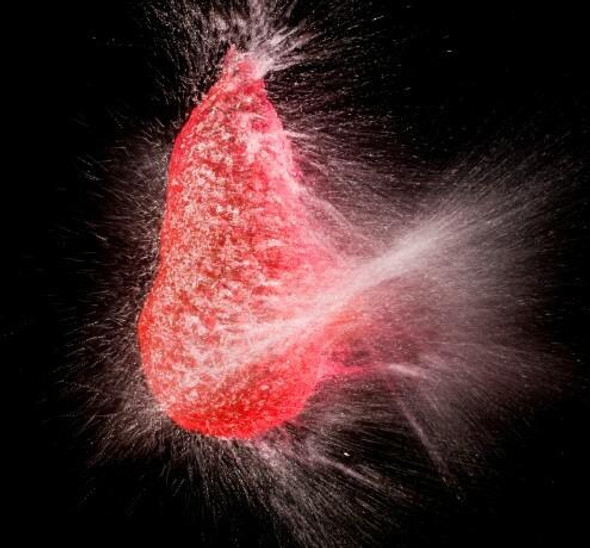Description
Human PGE2 (Prostaglandin E2) ELISA Kit
PGE2, or prostaglandin E2, is a biologically active lipid mediator and a member of the prostaglandin family. It plays a crucial role in various physiological processes, including inflammation, pain perception, and regulation of immune responses. Measurement of PGE2 levels in biological samples is essential for understanding its involvement in various pathological conditions and for conducting research in areas such as inflammation, cancer, and reproductive biology. The Assay Genie PGE2 ELISA Kit is a highly sensitive assay for the quantitative measurement of FSH in serum, plasma, cell and tissue lysates.
Key Features
| Save Time | Pre-coated 96 well plate | |
| Quick Start | Kit includes all necessary reagents | |
| Publication Ready | Reproducible and reliable results |
Overview
| Product Name: | Human PGE2 (Prostaglandin E2) ELISA Kit |
| Product Code: | HUFI04731 |
| Size: | 96 Assays |
| Alias: | PG-E2 ELISA Kit |
| Detection Method: | Competitive ELISA, Coated with Antibody |
| Application: | This immunoassay kit allows for the in vitro quantitative determination of Human PGE2 (Prostaglandin E2) concentrations in serum plasma and other biological fluids. |
| Sensitivity: | < 18.75pg/ml |
| Range: | 31.25-2000pg/ml |
| Storage: | 4°C for 6 months |
| Note: | For Research Use Only |
Additional Information
| Recovery | Matrices listed below were spiked with certain level of [ANALYTE] and the recovery rates were calculated by comparing the measured value to the expected amount of [ANALYTE] in samples.
| ||||||||||||||||||||
| Linearity | The linearity of the kit was assayed by testing samples spiked with appropriate concentration of Human PGE2 (Prostaglandin E2) and their serial dilutions. The results were demonstrated by the percentage of calculated concentration to the expected.
| ||||||||||||||||||||
| CV(%) | Intra-Assay: CV<8% |
Kit Components
| Component | Quantity | Storage |
| ELISA Microplate (Dismountable) | 8x12 strips | 4°C for 6 months |
| Lyophilized Standard | 2 | 4°C/ -20°C |
| Sample/Standard Dlution Buffer | 20ml | 4°C |
| Biotin-labeled Antibody (Concentrated) | 120ul | 4°C (Protection from light) |
| Antibody Dilution Buffer | 10ml | 4°C |
| HRP-Streptavidin Conjugate (SABC) | 120ul | 4°C (Protect from light) |
| SABC Dilution Buffer | 10ml | 4°C |
| TMB Substrate | 10ml | 4°C (Protection from light) |
| Stop Solution | 10ml | 4°C |
| Wash Buffer (25X) | 30ml | 4°C |
| Plate Sealer | 5 | - |
Other materials required:
- Microplate reader with 450 nm wavelength filter
- Multichannel Pipette, Pipette, microcentrifuge tubes and disposable pipette tips
- Incubator
- Deionized or distilled water
- Absorbent paper
- Buffer resevoir
Protocol
*Note: Protocols are specific to each batch/lot. For the correct instructions please follow the protocol included in your kit.
Equilibrate the TMB substrate for at least 30 min at 37°C beforeuse. When diluting samples and reagents, they must be mixed completely andevenly. It is recommended to plot a standard curve for each test.
| Step | Procedure |
| 1. | Set standard, test sample and control (zero) wells on the pre-coatedplate respectively, and then, record their positions. It isrecommended to measure each standard and sample in duplicate. Washplate 2 times before adding standard, sample and control (zero) wells! |
| 2. | Add Sample and Biotin-detection antibody: Add 50µL of Standard, Blank or Sample per well. The blankwell is added with Sample Dilution Buffer. Immediately add 50 µL of biotin-labelled antibody workingsolution to each well. Cover with the plate sealer provided. Gently tap the plate to ensure thoroughmixing. Incubate for 45 minutes at 37°C. (Solutions are added to the bottom of micro-ELISA platewell, avoid touching plate walls and foaming). |
| 3. | Wash: Aspirate each well and wash, repeating the process three timesWash by filling each well with Wash Buffer (approximately 350µL)using a squirt bottle, multi-channel pipette, manifold dispenser orautomated washer. Complete removal of liquid at each step is essentialto good performance. After the last wash, remove any remaining WashBuffer by aspirating or decanting. Invert the plate and pat it againstthick clean absorbent paper. |
| 4. | HRP-Streptavidin Conjugate(SABC): Add 100µL of SABC workingsolution to each well. Cover with a new Plate sealer. Incubate for30minutes at 37°C. |
| 5. | Wash: Repeat the aspiration/wash process for five times. |
| 6. | TMB Substrate: Add 90µL of TMB Substrate to each well. Coverwith a new Plate sealer. Incubate for about 10-20 minutes at 37°C.Protect from light. The reaction time can be shortened or extendedaccording to the actual color change, but not more than 30minutes.When apparent gradient appeared in standard wells, you can terminatethe reaction. |
| 7. | Stop: Add 50µL of Stop Solution to each well. Color turn toyellow immediately. The adding order of stop solution should be as thesame as the substrate solution. |
| 8. | OD Measurement: Determine the optical density (OD Value) of each wellat once, using a microplate reader set to 450 nm. You should open themicroplate reader ahead, preheat the instrument, and set the testing parameters. |
Sample Type
When carrying out an ELISA assay it is important to prepare your samples in order to achieve the best possible results. Below we have a list of procedures for the preparation of samples for different sample types.
| Sample Type | Protocol |
| Serum | If using serum separator tubes, allow samples to clot for 30 minutes at room temperature. Centrifuge for 10 minutes at 1,000x g. Collect the serum fraction and assay promptly or aliquot and store the samples at -80°C. Avoid multiple freeze-thaw cycles. If serum separator tubes are not being used, allow samples to clot overnight at 2-8°C. Centrifuge for 10 minutes at 1,000x g. Remove serum and assay promptly or aliquot and store the samples at -80°C. Avoid multiple freeze-thaw cycles. |
| Plasma | Collect plasma using EDTA or heparin as an anticoagulant. Centrifuge samples at 4°C for 15 mins at 1000 × g within 30 mins of collection. Collect the plasma fraction and assay promptly or aliquot and store the samples at -80°C. Avoid multiple freeze-thaw cycles. Note: Over haemolysed samples are not suitable for use with this kit. |
| Urine & Cerebrospinal Fluid | Collect the urine (mid-stream) in a sterile container, centrifuge for 20 mins at 2000-3000 rpm. Remove supernatant and assay immediately. If any precipitation is detected, repeat the centrifugation step. A similar protocol can be used for cerebrospinal fluid. |
| Cell culture supernatant | Collect the cell culture media by pipette, followed by centrifugation at 4°C for 20 mins at 1500 rpm. Collect the clear supernatant and assay immediately. |
| Cell lysates | Solubilize cells in lysis buffer and allow to sit on ice for 30 minutes. Centrifuge tubes at 14,000 x g for 5 minutes to remove insoluble material. Aliquot the supernatant into a new tube and discard the remaining whole cell extract. Quantify total protein concentration using a total protein assay. Assay immediately or aliquot and store at ≤ -20 °C. |
| Tissue homogenates | The preparation of tissue homogenates will vary depending upon tissue type. Rinse tissue with 1X PBS to remove excess blood & homogenize in 20ml of 1X PBS (including protease inhibitors) and store overnight at ≤ -20°C. Two freeze-thaw cycles are required to break the cell membranes. To further disrupt the cell membranes you can sonicate the samples. Centrifuge homogenates for 5 mins at 5000xg. Remove the supernatant and assay immediately or aliquot and store at -20°C or -80°C. |
| Tissue lysates | Rinse tissue with PBS, cut into 1-2 mm pieces, and homogenize with a tissue homogenizer in PBS. Add an equal volume of RIPA buffer containing protease inhibitors and lyse tissues at room temperature for 30 minutes with gentle agitation. Centrifuge to remove debris. Quantify total protein concentration using a total protein assay. Assay immediately or aliquot and store at ≤ -20 °C |
| Breast Milk | Collect milk samples and centrifuge at 10,000 x g for 60 min at 4°C. Aliquot the supernatant and assay. For long term use, store samples at -80°C. Minimize freeze/thaw cycles. |
PGE2 Background
Prostaglandin E2
Prostaglandin E2 (PGE2) is a biologically active lipid known for its involvement in inflammation and cancer-related processes. PGE2 belongs to the prostanoid family of lipids, which falls under the broader category of eicosanoids. Eicosanoids are produced through the oxidation of essential fatty acids (EFAs) containing 20 carbon atoms, commonly found in membrane phospholipids. Within the prostanoid group, PGE2 is one of several compounds, including PGF2α, PGD2, PGI2, and thromboxane A2 (TXA2), all synthesized through a series of specific enzymatic reactions. The synthesis of these compounds begins with the action of phospholipases (PLAs), a group of enzymes that hydrolyze membrane phospholipids at the sn-2 position. This process releases free fatty acids, including arachidonic acid (AA), which serves as a precursor for the synthesis of PGE2 and other prostanoids.
PGE2 Function
PGE2 is involved in the dilation of blood vessels (vasodilation) and increasing vascular permeability, which contribute to the redness, warmth, and swelling commonly observed during inflammation. PGE2 also promotes the migration of immune cells to the site of inflammation and regulates the release of other inflammatory mediators. PGE2 is involved in the transmission and modulation of pain signals. It sensitizes pain receptors (nociceptors) and enhances their responsiveness to painful stimuli. PGE2 plays a crucial role in reproductive biology. It is involved in various aspects of the menstrual cycle, including ovulation, follicular development, and maintenance of pregnancy. PGE2 also participates in uterine contractions during labor and regulates blood flow to reproductive organs. PGE2 helps maintain the integrity of the gastrointestinal mucosa and promotes healing processes. It stimulates the production of mucus and bicarbonate, which provide a protective barrier against gastric acid and prevent damage to the stomach lining.
PGE2 ELISA Kit FAQs
What is the PGE2 ELISA Kit used for?
The PGE2 ELISA kit is specifically designed for the quantitative measurement of Prostaglandin E2 (PGE2) levels in human samples. PGE2 is a bioactive lipid mediator involved in various physiological and pathological processes, including inflammation, pain, and immune responses. The PGE2 ELISA kit enables researchers and healthcare professionals to accurately and sensitively quantify PGE2 levels, facilitating investigations into the role of PGE2 in different disease states and providing insights into potential therapeutic interventions.
What are the advantages of using the PGE2 ELISA Kit?
The PGE2 ELISA Kit offers several advantages, including high sensitivity, accuracy, and reproducibility. It provides a user-friendly and reliable method to quantify PGE2 levels in biological specimens, allowing for precise measurements and robust data analysis.
What sample types are compatible with PGE2 ELISA Kit?
The PGE2 ELISA Kit is compatible with various sample types, including serum, plasma, cell lysates, and tissue homogenates. It provides flexibility in sample selection, allowing researchers to analyze PGE2 levels in different biological matrices.
What are the storage requirements with PGE2 ELISA Kit?
The PGE2 ELISA Kit components should be stored according to the instructions provided in the kit manual. Generally, it is recommended to store the kit components at the recommended temperature to ensure their stability and optimal performance.
What should I do if my assay results are not optimal?
If you encounter any issues or have suboptimal assay results, we recommend contacting our dedicated support team for assistance. They will be available to provide troubleshooting guidance, answer your questions, and ensure you achieve the best possible results with the PGE2 ELISA Kit.
Citations
| Moran et al. | Investigating the Effects of Olaparib on the Susceptibility of Glioblastoma Multiforme Tumour Cells to Natural Killer Cell-Mediated Responses | Pharmaceutics 2023 | PubMed ID: 36839682 |
| Mylod et al. | Real-time ex vivo monitoring of NK cell migration toward obesity-associated oesophageal adenocarcinoma following modulation of CX3CR1 | Scientific Reports 2024 | PubMed ID: 38369570 |







